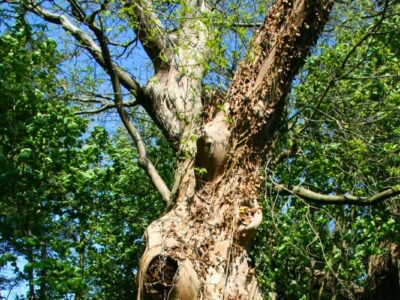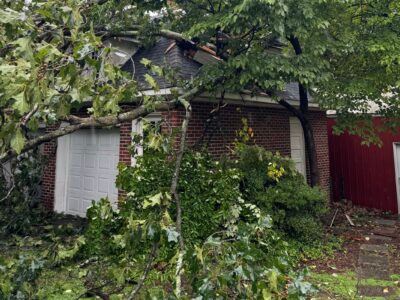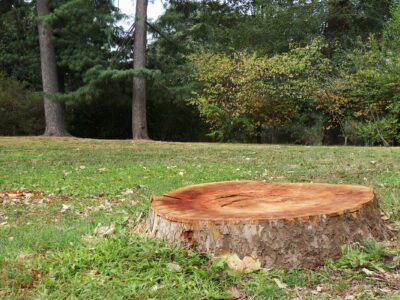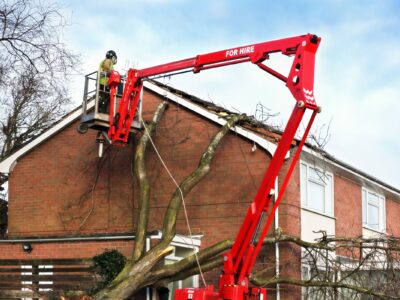The Top Reasons To Remove a Tree
November 15, 2023
Discover the top reasons to remove a tree in North Carolina. From safety concerns to property damage prevention, don't miss out on this must-read article.
In North Carolina, the lush greenery and majestic trees are an integral part of the landscape.
However, there are times when removing a tree becomes necessary. Whether it poses a safety hazard, suffers from disease or infestation, interferes with other plants or structures, or has health and structural issues, the decision to remove a tree is not to be taken lightly.
In this article, we will explore the various reasons why removing a tree in North Carolina may be the best course of action to keep you and your property safe and to help you avoid any tree liability.
Reasons to Remove a Tree – Key Takeaways
- Safety hazards and risk assessment: It is important to assess potential dangers before removing a tree in North Carolina, as diseased, damaged, or unstable trees can pose a threat to people and property. Falling branches or trees during severe weather events can cause injuries or fatalities, and weak root systems can lead to uprooting during high winds, endangering structures and pedestrians. Proximity to power lines can also create fire hazards or disrupt electrical supply.
- Disease and infestation: Trees in North Carolina can be vulnerable to diseases and infestations. Rapidly spreading diseases like Dutch elm disease and oak wilt can kill entire trees, while fungal infections and cankers weaken trees and make them more susceptible to other problems. Insects like emerald ash borers and pine bark beetles can feed on foliage and weaken tree structures. Untreated infestations can lead to tree death or spread pests to nearby trees.
- Interference with other plants and structures: Trees that encroach on other plants or structures can cause damage. Overhanging branches can scrape against roofs during strong winds, tree roots can disrupt foundations or block underground pipes, and dense foliage can block sunlight and compete for water and nutrients, stunting the growth of other plants. Trees growing close to power lines increase the risk of accidents, fires, and power outages.
- Tree health and structural issues: Regularly inspecting trees for signs of decay or damage is important. Diseases like oak wilt, Dutch elm disease, and pine bark beetles weaken tree health, while decay compromises structural integrity and increases the risk of falling during storms or high winds. Leaning or overhanging branches also pose risks to structures, power lines, and pedestrians. Timely removal of unhealthy or structurally compromised trees is essential for safety and aesthetics.
Reasons to Remove a Tree – Safety Hazards and Risk Assessment
There’s a high risk of accidents and injuries, so it’s important to assess the safety hazards before removing a tree in North Carolina. Safety should always come first, and when it comes to tree removal, it’s crucial to consider the potential dangers involved.
Trees that are diseased, damaged, or structurally unstable pose a significant threat to people and property.
One of the main safety hazards is the risk of falling branches or entire trees. In North Carolina, severe weather events like hurricanes and thunderstorms are common, which can weaken trees and make them more likely to fall. These falling trees and branches can cause serious injuries or even fatalities. Additionally, trees with weak root systems are susceptible to uprooting during high winds, posing a great danger to nearby structures or pedestrians.
Another safety concern is the proximity of the tree to power lines. Trees that grow too close to power lines can create a fire hazard or disrupt the electrical supply. If a tree comes into contact with power lines, it can result in electrocution or power outages. It’s crucial to assess the distance between the tree and power lines to ensure the safety of both the tree removal team and the surrounding community.
Lastly, the condition of the tree itself should be evaluated. Trees that are leaning at an angle, showing signs of decay, or have large dead branches may be at risk of sudden failure. These trees can fall unexpectedly, causing significant damage and endangering anyone in the vicinity.
Considering these safety hazards is essential for determining whether a tree should be removed in North Carolina. Prioritizing safety not only protects individuals and property but also ensures a smooth and successful tree removal process.
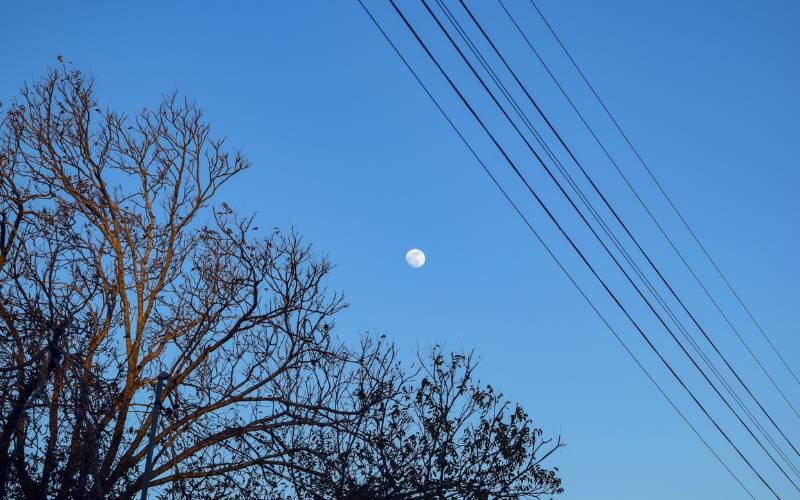
If not properly pruned and managed, trees near powerlines may need to be removed.
Reasons to Remove a Tree – Disease and Infestation
One common reason to get rid of a tree in NC is due to disease or infestation. Trees can become vulnerable to various diseases and infestations, which can not only weaken the tree but also pose a risk to the surrounding environment. Identifying the signs of disease or infestation early on is crucial to preventing further damage and ensuring the safety of your property.
Diseases can affect trees in different ways. Some diseases, like Dutch elm disease or oak wilt, can rapidly spread and cause the death of the entire tree. Other diseases, such as fungal infections or cankers, can weaken the tree and make it more susceptible to other problems. In either case, it is important to consult with a professional arborist who can accurately diagnose the disease and recommend the appropriate course of action.
Infestations by insects or pests can also be detrimental to a tree’s health. Common pests in NC include emerald ash borers, pine bark beetles, and tent caterpillars. These pests can feed on the tree’s foliage, bore into the trunk, or create nests that weaken the tree’s structure. If left untreated, infestations can lead to the death of the tree or the spread of pests to nearby trees.
In summary, disease and infestation are significant reasons to remove a tree in NC. It is crucial to promptly address these issues to prevent further damage and maintain a safe and healthy environment. Consulting with a professional arborist is the best way to assess the extent of the problem and determine the appropriate course of action.
Reasons to Remove a Tree – Interference with Other Plants and Structures
If you have trees that interfere with other plants and structures, it may be necessary to address the issue. While trees provide shade, beauty, and many other benefits, they can also cause problems when they start to encroach on other plants or structures in your yard.
For instance, if a tree is growing too close to your house, its branches may scrape against the roof during strong winds, causing damage. Additionally, tree roots can spread and disrupt the foundation of your home or block underground pipes.
Interference with other plants is another concern. Trees with dense foliage can block sunlight from reaching other plants in your garden, stunting their growth. They can also compete for water and nutrients, leaving other plants struggling to survive. In some cases, trees may even choke out smaller plants, preventing them from thriving.
When it comes to structures, trees can cause problems if their branches grow too close to power lines. This not only poses a risk of power outages but also increases the chances of accidents and fires. Moreover, trees with shallow roots can lift and crack sidewalks, driveways, and even the foundation of your house.
In conclusion, if you have trees that interfere with other plants and structures, it is important to address the issue promptly. Removing or pruning these trees can help protect your property and ensure the health and growth of other plants in your yard.
Reasons to Remove a Tree – Health and Structural Issues
To ensure the health and structural integrity of your trees, it’s important to regularly inspect them for any signs of decay or damage. Trees that are unhealthy or have structural issues can pose a threat to your property and safety.
Here are some reasons why you may need to remove a tree in North Carolina:
- Disease: Trees can be vulnerable to various diseases that can weaken their overall health. Diseases like oak wilt, Dutch elm disease, and pine bark beetles can spread quickly and cause irreversible damage. Removing infected trees can prevent the disease from spreading to other healthy trees in the vicinity.
- Decay: Decay is a common issue in trees, especially in older ones. Signs of decay include soft or hollow areas, cracks, and cavities. These decayed areas can compromise the structural integrity of the tree, making it more susceptible to falling during storms or high winds.
- Leaning or overhanging branches: If a tree is leaning excessively or has overhanging branches, it can pose a risk to nearby structures, power lines, or pedestrians. Removing such trees can prevent potential accidents and property damage.
Regular inspections and timely removal of trees with health or structural issues are crucial to maintaining a safe and aesthetically pleasing environment. Don’t overlook these signs, as they can save you from potential hazards and costly repairs.
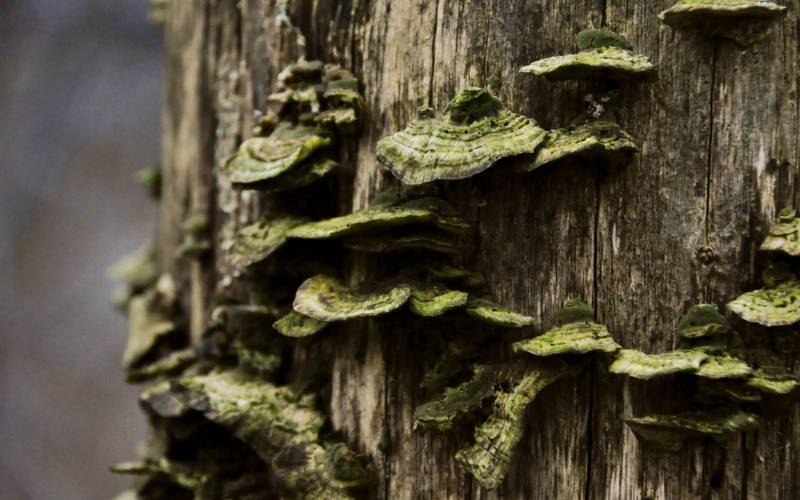
Diseases and structurally compromised trees should be removed to protect people and property.
Reasons to Remove a Tree – Frequently Asked Questions
Can I remove a tree in North Carolina without a permit?
Yes, you can remove a tree in North Carolina without a permit if it meets certain criteria. However, it’s important to check with your local government or arborist to ensure you comply with any regulations.
How much does tree removal cost in North Carolina?
Tree removal costs in North Carolina can vary, but on average, you’ll be looking at around $500 to $1,500. However, keep in mind that the price depends on factors like the size of the tree, accessibility, and additional services required.
What are the alternative options to tree removal?
You have a few alternative options for tree removal in North Carolina. You can consider tree trimming, tree pruning, or tree transplanting, depending on the specific needs and circumstances of your situation.
How long does it take to remove a tree in North Carolina?
Removing a tree in North Carolina typically takes a few hours to a couple of days, depending on the size and complexity of the job. Factors like permits, equipment availability, and weather can also affect the timeline.
Are there any regulations or guidelines for tree removal in North Carolina?
Yes, there are regulations and guidelines for tree removal in North Carolina. You must obtain a permit from your local government and follow specific rules to ensure the safety of the environment and surrounding properties.
Have a Tree to Remove in North Carolina?
Call Godspeed Tree Service today at 336-399-8348. We’ve got the skill, experience, and equipment to handle your tree removal quickly, efficiently, and safely. See why we’re the top tree service in North Carolina!
Proudly serving the Winston-Salem area and Forsyth County!

Godspeed Tree Service
Owned and operated with high standards and consistent reliability by Bobby Gates, Godspeed Tree Service has earned the trust of the North Carolina Triad community over the course of more than 25 years in business. With a strong emphasis on safety, conscientious training, and accommodating the needs of each client, you can't go wrong by hiring Godspeed for any of your tree service needs!
